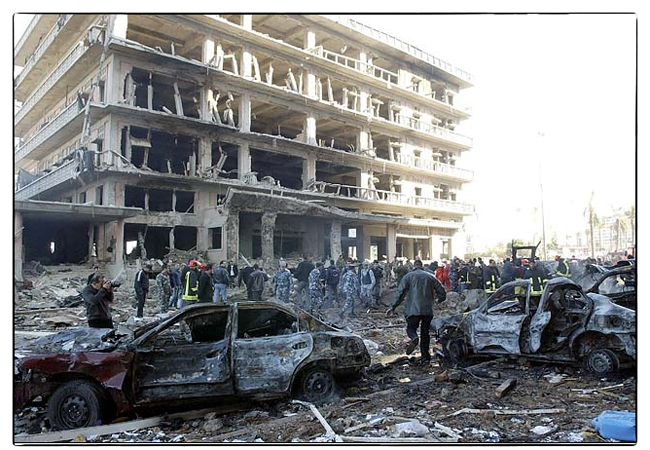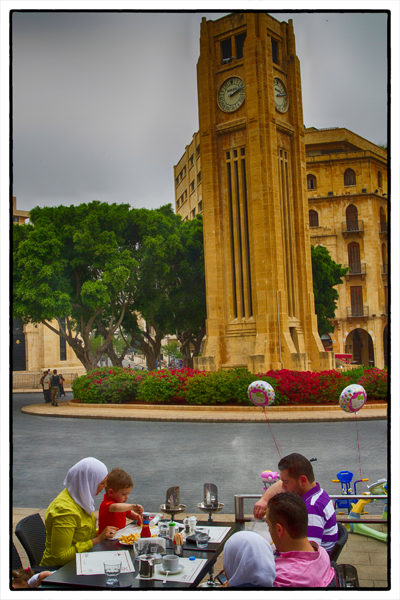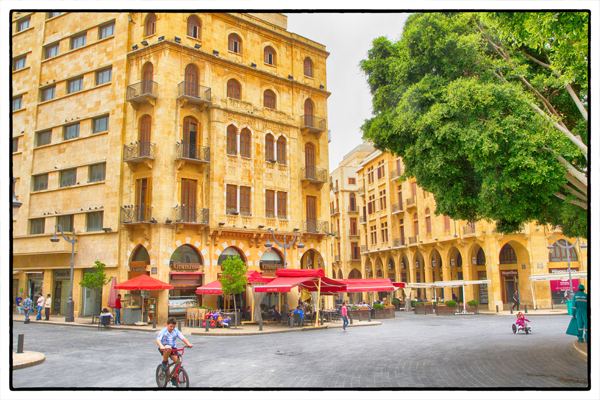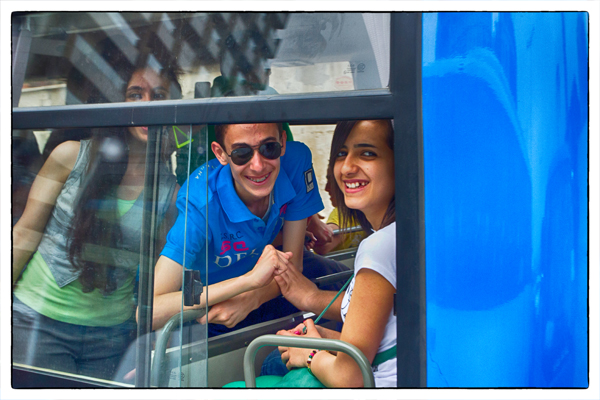
A view of the St. Georges bombed out structure from the St. Georges Beach Club, which is still open.
I didn’t come to Lebanon to investigate the assassination of Rafiq al-Hariri but I have to admit I’ve become rather fascinated by the whole affair. Particularly considering what’s going on in Syria right now.
Anyway, I wanted to tell you a related story. Yesterday, Waffa and I had lunch at the Phoenicia Hotel, which, as I’d mentioned, sits kitty-korner to where the truck bomb blew up that killed Prime Minister Hariri eight years ago. At the time, the Phoenicia was one of the glitziest hotels in Beirut but after the bombing, they had to close for many months because of the damage. After lunch, Waffa and I went on a tour of the property with the hotel’s PR director, Michelle Mallat Rishani, and I have to say the hotel looks gorgeous. More on that at a later time.
What was fascinating to me was that from the Phoenicia’s pool, you could look across the street and see the old St. Georges Hotel. The bomb exploded right in front of the St. Georges and while the Phoenicia is back in business and looking more beautiful than ever, the St. Georges is still basically just a dilapidated bombed-out shell. But there’s a reason for that which goes beyond the damage done to the hotel.
Built in the 1920, the St. Georges was once synonymous with the glitz and glamour of Beirut, hosting the likes of Elizabeth Taylor and Richard Burton as well as royalty and other celebrities such as the Shah of Iran, Egyptian diva Oum Kalthoum and the notorious double British agent Kim Philby.
“Before the (1975-1990) civil war, Lebanon was the world’s capital and the St. Georges was the capital of Beirut,” recalls Serge Nader, whose family ran the beach adjacent to the hotel until 1997.
During the war, the four-storey pink stone building was gutted by fire and sat empty for years until a new owner, Fady Al-Khoury, bought the building and began a massive remodeling of the old structure. The hotel was close to being finished when the bomb went off killing Hariri and severely damaging the building once again. The irony is that for years Khoury had been battling Rafiq al-Hariri’s development project, Solidere, over the hotel. According to Khoury, Solidere wanted to take over St. Georges’ waterfront and marina.
Depending on who you talk to in Lebanon, Solidere is either the company that should be credited with rebuilding war-ravaged Beirut or despised for wiping out its heritage and driving its original residents and merchants out while reaping tens of millions of dollars in profits for itself.
Meanwhile, Khoury has hung a massive sign on the eastern façade of the old St. Georges with a simple, declarative message: Stop Solidere. Over the years, the government has come and taken the sign down only to have Khoury hang it back up. Meanwhile, the historic St. Georges sits empty.







Recent Comments